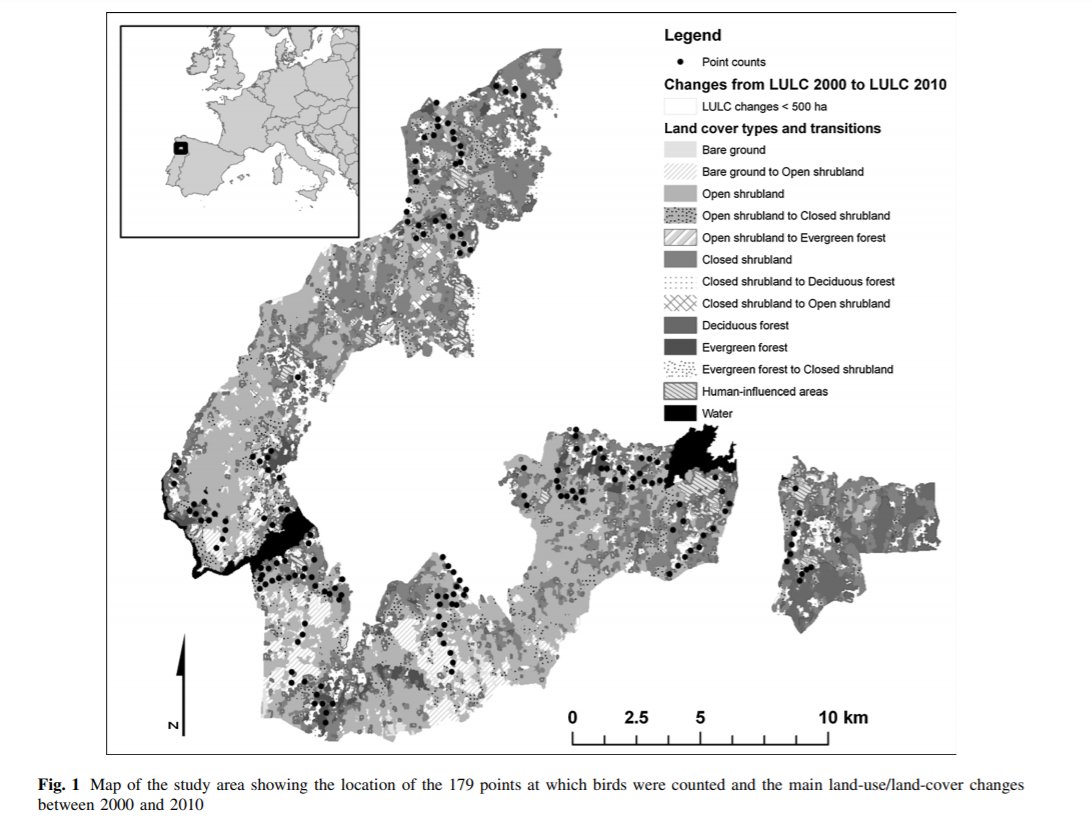Today in #rewildingscience: Avian winners & losers of rural land abandonment (Regos et al 2016)
The study found
-An overall positive effect on biodiversity ⬆️
-13 shrubland & forest bird species showed an increase ⬆️
-4 ecotone & open-habitat species showed a negative trend ⬇️
The study found
-An overall positive effect on biodiversity ⬆️
-13 shrubland & forest bird species showed an increase ⬆️
-4 ecotone & open-habitat species showed a negative trend ⬇️

The study analysed remotely sensed data-derived maps in combination with bird census data carried out in 2000 and 2010 at both landscape and census plot scale. 2/9 

They found a gradient of change from bare ground and open shrubland to closed shrubland and woodland. With closed shrubland increasing by 17% and evergreen and deciduous forest increasing by 14% and 107%. While bare ground decreased by 85% 3/9 

13 shrubland & forest bird species showed a significant increase ⬆️ (including species of conservation concern such as Turtle Dove, Dartford Warbler and Western Bonelli’s Warbler) 🐦 4/9 

However four ecotone and open-habitat species (including Red-backed Shrike, Tree pipit, Jay and Cuckoo) showed a significant negative trend⬇️ 5/9 

Interstingly these four declining species showed a positive trend at the National level while all declining species at national level maintained or increased their occurrence rates in the study area 6/9
The paper concludes that land abandonment in this area provides habitat for high-priority shrub–forest-dwelling bird species at the cost of modest reductions in numbers of open-habitat birds 7/9
and that rewilding appears to have overall positive effects on biodiversity, reccomending that it should be considered by policy makers as an alternative land-use strategy in marginal mountain areas, particularly if they have been historically affected by wildfires 8/9
A link to the paper can be found here:
usc.gal/export9/sites/…
#rewilding
#rewildingscience
#conservation
#birds
9/9
usc.gal/export9/sites/…
#rewilding
#rewildingscience
#conservation
#birds
9/9
@threadreaderapp unroll
• • •
Missing some Tweet in this thread? You can try to
force a refresh









